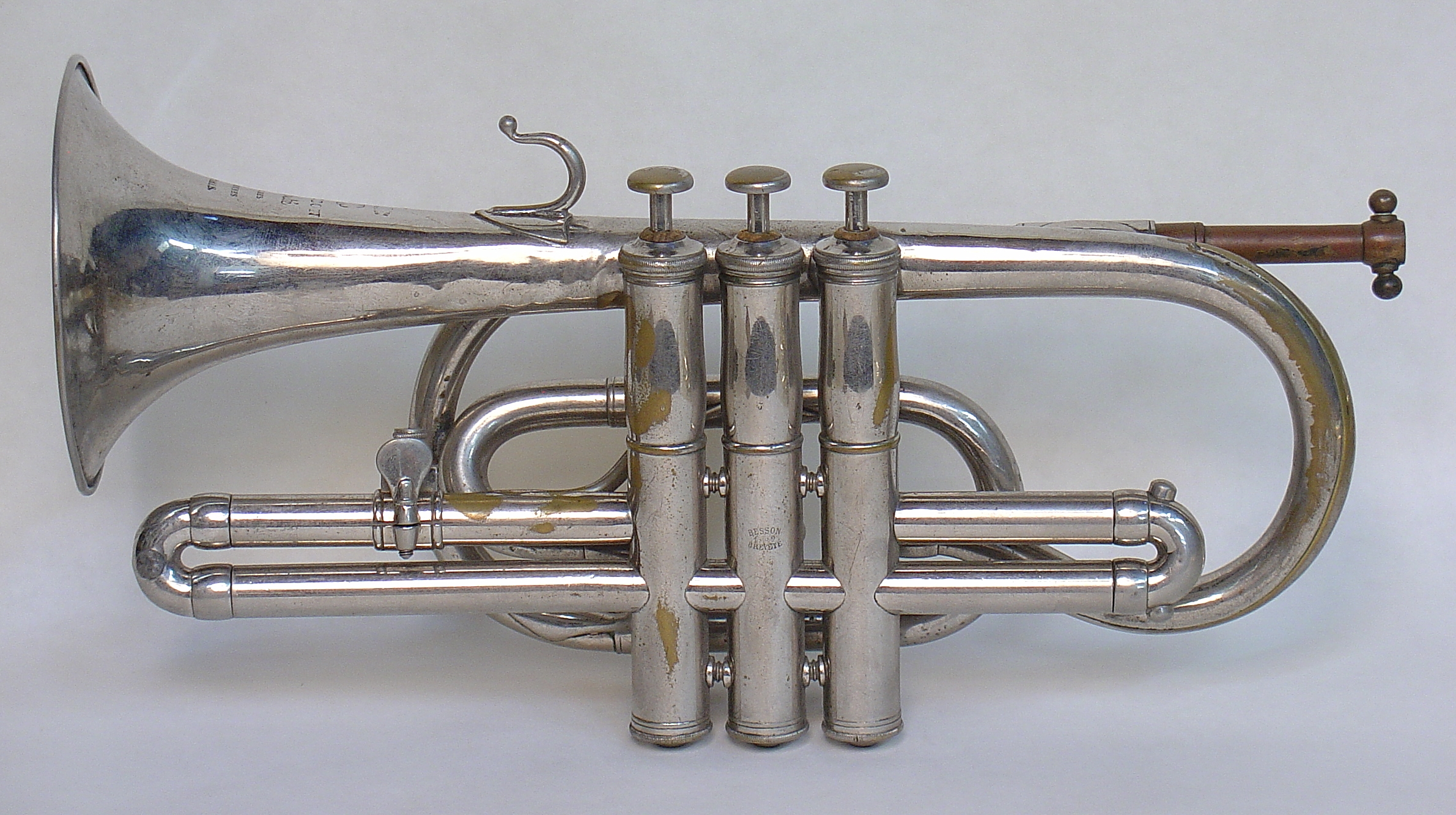Early Besson Cornets
I just finished restoring the brass cornet shown here for Tom Meacham, making this a good time to feature two early cornets made by Besson in Paris. The nickel plated cornet (plating is not original) is the earliest Besson in my collection, which I have always wanted to restore, but always has lower priority with other projects.
Most brass instrument fans aren't familiar with the earliest Besson cornets. By the late nineteenth century there were just two dominant models of Bb cornets that retained their popularity for about five decades, but there were a number of short lived models (at least some of them patented) that lead up to those. I feature one of Niles Eldredge's examples with Stoelzel valves on my restoration pages and a previously unknown model with rotary valves has only just surfaced very recently.
Most early Besson cornets that we do see are more like these two Modeles Francais (French Models). I'm not going to parse the variations that were offered in the early years, but point out the differences in these two, which at first appear very similar. The nickel cornet is slightly more compact with a smaller bell in both the rim and the curve. It has only one tuning slide, the additional slide on later Besson cornets is used to change from high pitch to low pitch.
The third and fourth photos also show that the ports through the valve section are different. This was an area where Besson experimented with a number of variations, the design seen in the first example is very similar to what became the most commonly seen on twentieth century cornets. You will also see differences in braces and pull knobs.
The most interesting differences in these cornets is in the markings, Tom's is serial number 110 and mine is 1882, indicating that it must have been made several years later. In fact, it was made a year or two earlier. At about the time that Gustave Besson fled Paris for London in 1857, a new series of numbers was started. These two cornets were made at the same Paris address, number 1882 by Gustave before he left and number 110 by his wife Florentine Ridoux afterwards. The bell stamp is not very clear, but the earlier cornet has the legend "Proportions et Forms Brevetee" (patented) and the monogram "GB" for Gustave and the later has "FR" for Florentine.
The bell rim on number 1882 is 4 7/16" and has a bore measuring
.459". Number 110 has a bell rim diameter of 4 5/8" and bore of .475". Both cornets are 12 7/8" long with the shanks removed.








